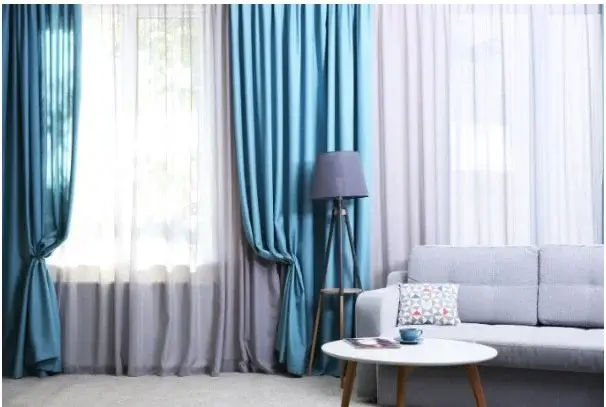Choosing suitable curtains is an important step in creating a cozy and harmonious interior. Curtains not only perform the practical function of protecting from light and prying eyes, but also play a key role in shaping the overall style of the room. The right color of curtains can transform a room, make it more spacious or comfortable, highlight the advantages of the interior or hide flaws.
There are many types of curtains for windows, each of which has its own characteristics and advantages:
ul>
Regardless of the type of curtains you decide When buying curtains for windows, the choice of color remains one of the key factors determining their appearance and impact on the interior. In this article, we will look at the basic principles and guidelines for choosing curtain colors to help you create the perfect design for your windows.
Classification of curtains by type of design
Before you start choosing a color, It is important to understand the main types of curtains and their features. Each type has its own advantages and can have a different effect on the perception of color and the overall appearance of the room.
Classic curtains
Traditional curtains with hangers or grommets that hang freely from the eaves to the floor. They can be made from a variety of fabrics and are often used in combination with tulle or curtains.
Roman blinds
Elegant curtains that gather into even horizontal pleats when raised. They are ideal for small windows and create a neat, uncluttered look.
Roller Blinds
Easy-to-use curtains that roll up. They are great for modern interiors and can be made from a variety of materials, including opaque fabrics.
Blinds
A design made of horizontal or vertical slats that can be rotated to adjust the light. Blinds come in plastic, wood, aluminum and fabric.
Panel curtains
Also known as Japanese curtains, they consist of several vertical panels that move along special guides. They are great for large windows and doors.
Types of curtains by material
When choosing the color of curtains, it is important to consider the material from which they are made. Different materials interact with light differently and create different textures, which affects how color is perceived. Let's consider the main options for window curtains in terms of material of manufacture.
Textile curtains
The most common type of curtains. They can be made from various fabrics:
- Cotton - a natural, breathable material, suitable for any room
- Linen - an environmentally friendly material with a natural texture, ideal for country or eco style
- Silk is a luxurious fabric that creates a sophisticated look
- Polyester is a practical synthetic material that is resistant to fading
- Velvet is a dense fabric that creates a feeling of warmth and comfort
- li>
Plastic curtains
Usually used for blinds or roller blinds. Advantages:
- Easy to care for
- Moisture resistant
- Wide selection of colors and shades
Bamboo curtains
Eco-friendly option that creates a special atmosphere in the room:
- Natural material with a unique texture
- They transmit light well, creating soft lighting
- Suitable for eco-style and ethnic interiors
Wooden curtains
Most often found in the form of blinds or roller blinds:
- Creates a warm, cozy atmosphere
- Available in a variety of wood shades
- Pairs well with classic and modern interiors
Curtain styles to suit a variety of interiors
The choice of curtain color is closely related to the interior style. Each type of curtain can fit differently into a specific design. Let's look at the main styles of curtains and their features for various interiors.
You can buy light-proof curtains in the Alser online store https://alser.ua/shtory-svetonepronitsayemyye/
Classic style
Classic interiors require elegant and luxurious curtains:
- Long, floor-length, with tiebacks or lambrequins
- Heavy fabrics are often used: velvet, brocade, silk
- Popular options are plain or with classic patterns (damascus , monogram)
- Colors: noble shades of beige, gold, burgundy, emerald
Modern style
Modern interiors prefer functionality and minimalism:
- Simple lines, lack of unnecessary decor
- Roller blinds, Japanese panels, minimalist curtains are popular
- Materials: light fabrics, often with geometric patterns





